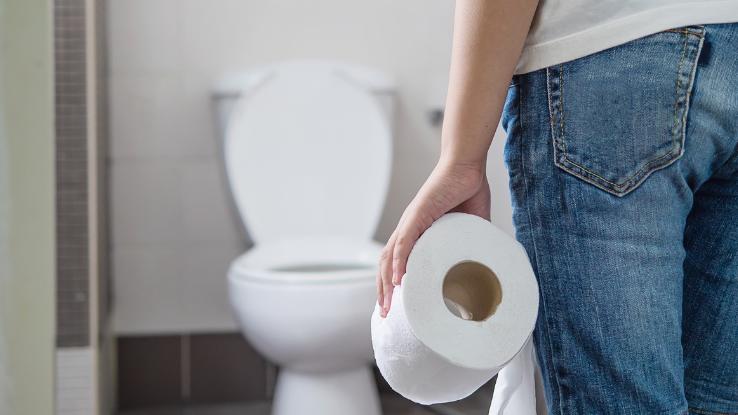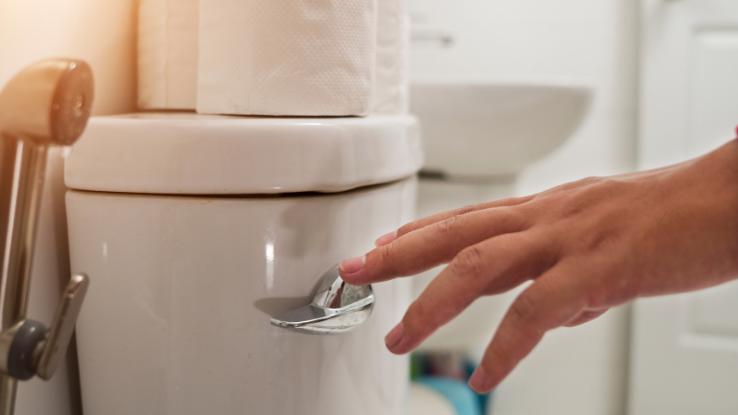
Feces, or stool, is excreted as semi-solid waste by the gastrointestinal (GI) tract after all necessary fluid and nutrients are absorbed from the food we eat. The appearance and texture of adult stool varies and can be impacted by diet, medications, and the functioning of the digestive tract. In particular, the color of stool can at times serve as a gauge of digestive health. Although changes in color may be commonplace and generally insignificant, persistent color change may be indicative of an underlying health issue.
Normal Stool Color
The color of stool can vary between individuals or day to day, but it is typically some shade of brown due to its bilirubin content. Bilirubin is a by-product of the breakdown of red blood cells that gets excreted through the liver in a fluid called bile. As bile travels through the intestinal tract, its orange-yellow and green pigments undergo a series of chemical modifications that result in stool that is light to dark brown.

The color of stool may be affected by diet or medications, but these changes are usually not consistent between bowel movements. Chronic changes in the color of stool may indicate a more serious medical problem.
Changes in Stool Color
Certain stool colors that can signify health problems are listed here. To avoid unnecessary concern, it is also important to keep track of whether you have recently eaten certain foods that may have led to these color changes.

Bright red stool: Referred to as hematochezia, it may indicate active gastrointestinal bleeding that originates from the lower digestive tract. This can also commonly occur with hemorrhoids, which are swollen veins of the rectum or anus that can cause bleeding with defecation. Foods that can cause bright red stool include:
- Beets
- Cranberries
- Red food coloring or gelatin
- Tomato juice
Black or maroon stool: Also called melena, dark stool may indicate bleeding of the stomach or the upper part of the small intestine. Black stool that results from a gastrointestinal bleed is often associated with a sticky, tarry texture and foul odor. Other common causes of dark black stool are:
- Iron supplementation
- Medications that contain charcoal or bismuth, like Pepto Bismol
- Licorice
- Beets
Chalky, white, or clay-colored stool: This color may indicate the absence of bile from the stool as a result of an obstruction of bile flow from the liver. Obstruction of the bile duct may occur as a result of a medical condition called biliary obstruction or a tumor. This stool may look like a pale yellow, or off-white.
- Some anti-diarrheal medications may also lead to pale stools
Pale or yellow stool: This color may indicate the presence of undigested fat in the stool. Conditions such as pancreatitis (inflammation of the pancreas), celiac disease, or pancreatic cancer can prohibit the absorption of fats by the body, resulting in fat-laden and pale stool. This type of stool often has a greasy texture and foul smell.
Green stool: This change may indicate that food is traveling through the long intestine too quickly and therefore not allowing bile to break down completely. Foods that may cause a green appearance of stool are:
- Leafy green vegetables such as spinach or lettuce
- Green food dyes (found in both food and drinks)
Symptoms Associated with Changes in Stool Color
Changes in stool color may be asymptomatic or paired with an array of symptoms, which usually correspond to the underlying medical cause. If you are experiencing any of the following symptoms along with a change in stool color, it is important to seek prompt medical attention.

Red, maroon, or black tarry stools that are caused by bleeding within the gastrointestinal tract (esophagus, stomach, small intestine, large intestine) may have accompanying symptoms, which can vary depending on if the bleed is acute or chronic:
- Abdominal pain
- Nausea or vomiting of blood
- Diarrhea and cramping
- Weakness, lightheadedness, and dizziness
- Shortness of breath
Persistent white or yellow stool that is caused by an obstruction of bile flow may be related to gallstones and cause pain on the right side of the abdomen. However, an obstruction caused by cancer of the bile duct or cancer of the head of pancreas may not present any overt symptoms unless the tumor is large. Other signs of a bile duct obstruction may include:
- Jaundice or yellowing of the skin
- Nausea or vomiting
- Itchiness
- Weight loss
Assessment and Diagnosis
To determine if there is an underlying medical condition causing a change in stool color, a medical provider will initially perform a thorough physical exam and review your medical history. Additionally, they may collect a stool sample for further analysis, and/or order blood tests. These tests can show the presence of anemia, liver disease, gallbladder disease, or other underlying conditions that may be responsible for changes in stool color:

- Complete blood count (CBC)
- Blood clotting tests
- Comprehensive metabolic panel
- Pancreatic enzyme levels
- Liver function tests
Medical providers may also utilize the following imaging or endoscopic methods to evaluate the underlying cause of a change in stool color:
Abdominal CT scan: Imaging of the abdomen to observe active bleeds or changes in digestive organs.
Upper endoscopy (esophagogastroduodenoscopy): A procedure that passes a small camera through the mouth to visualize the upper part of the gastrointestinal tract.
Colonoscopy: A procedure that passes a small camera through the rectum to visualize the colon and the distal part of the small bowel.
Treatment may vary depending upon your particular stool color and associated symptoms. Consult with your medical provider if you have any questions or concerns about recent changes in stool color that are not explained by your diet.
Resource Links:
- “Bowel Movement” via MedlinePlus
- “Stool Color: When to Worry” via Mayo Clinic
- “Symptoms & Causes of GI Bleeding” via National Institute of Diabetes and Digestive and Kidney Diseases
- “Black or tarry stools” via MedlinePlus
- “Stools — pale or clay-colored” via MedlinePlus
- “Gastrointestinal bleeding” via Mayo Clinic
- “Biliary Obstruction” via National Institutes of Health





